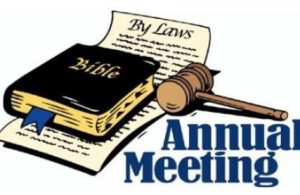What Is Discussed at an Annual Church Business Meeting?
Annual church business meetings are critical events where members gather to review the year's activities, make plans, and set the course for the future. These meetings focus on transparency, accountability, and strategic planning to ensure the church meets both its spiritual and organizational goals.

Review of the Year's Achievements and Challenges
At the core of the annual meeting is a detailed review of the past year. Church leaders present achievements in various ministries such as outreach, youth programs, and community services. For example, a church might report a 20% increase in outreach program attendance or a successful fundraising campaign that raised $50,000 for renovations. Challenges are also openly discussed to assess areas needing improvement, like declining volunteer numbers or budget shortfalls.
Financial Reporting and Budget Approval
A pivotal element of the meeting is the financial report. Treasurers provide a transparent account of the church’s finances, detailing income sources like tithes, offerings, and fundraising events, alongside expenditures on staff salaries, maintenance, and mission work. Members review the past year's budget performance and approve the upcoming year’s budget, ensuring it aligns with the church’s objectives. For instance, if last year’s budget was $200,000 and 70% was allocated to ministry work, adjustments might be proposed based on the actual spending and planned activities.
Elections of Church Leadership
Leadership roles such as council or committee members, often up for election during the annual meeting, are crucial for driving the church's mission forward. The process is transparent, with nominations often required to be submitted before the meeting. This ensures that all members have the opportunity to participate in the decision-making process by voting for candidates they believe will effectively lead the church in its spiritual and community missions.
Strategic Planning and Goal Setting
Strategic discussions at the meeting focus on setting goals for the upcoming year. This includes expanding existing programs, initiating new ones, or setting specific community outreach targets. For example, the church might set a goal to increase membership by 10% or launch a new community support program. These goals are debated and refined during the meeting to ensure they are realistic and align with the church’s broader vision.
Member Engagement and Feedback
A significant portion of the meeting is dedicated to member engagement. This is an opportunity for church members to voice their opinions, suggest improvements, and ask questions about various aspects of church management and activities. Effective meetings encourage active participation from members, fostering a sense of ownership and involvement in church activities.
Setting the Church Business Meeting Agenda
The agenda for these meetings is meticulously planned to cover all necessary topics while allowing ample time for member interaction. The agenda typically includes time slots for each significant section, ensuring that the meeting proceeds smoothly and efficiently without overlooking any critical areas.
In essence, the annual church business meeting is a comprehensive session where members collectively review the past and plan for the future, ensuring the church remains a thriving and pivotal part of the community.